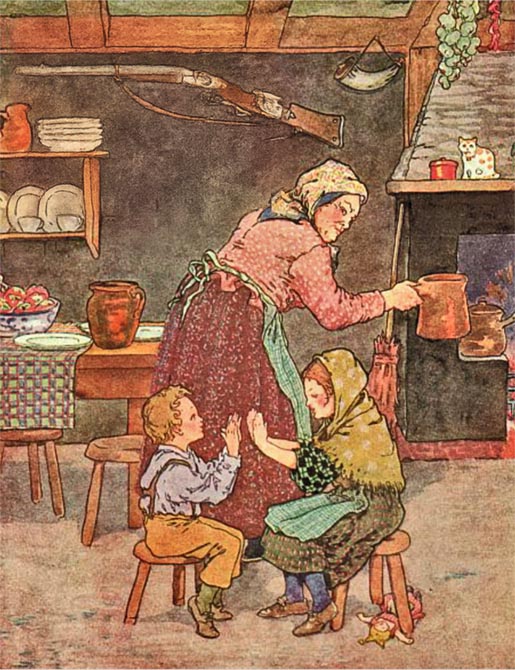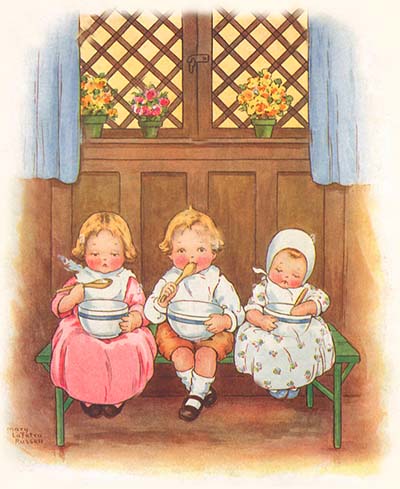Pease-porridge Hot
Pease porridge hot, pease porridge cold,
Pease porridge in the pot, nine days old;
Some like it hot, some like it cold,
Some like it in the pot, nine days old

Version from the 1760s:
Pease porridge hot,
Pease porridge cold,
Pease porridge in the pot,
Nine days old.
Spell me that in four letters:
I will, T-H-A-T.
Origins
The dish is older than the rhyme. People were boiling dried peas into porridge for hundreds of years, long before anyone wrote it down. It was cheap, filling, and could sit in the pot for days — heated, reheated, and eaten again. That’s why the line nine days old wasn’t just silliness. It was something families really knew.
The rhyme itself first showed up in print in the 1760s, tucked into Mother Goose’s Melody. That version still had the spelling riddle at the end, turning dinner into a word game. By the 1800s, the riddle dropped away, and the four-line chant became standard. Its bounce made it perfect for clapping games, and from then on, it belonged more to the nursery than to the kitchen.
 Meaning
Meaning
Children love it for its rhythm — hot, cold, old, repeat. The words roll off the tongue and give just enough absurdity to make them laugh. Adults could smile at it too, because it was close to the bone: pease pudding really could be eaten hot or cold, fresh or days old.
The older riddle form added a clever twist. “Spell me that in four letters” leads children toward a trick answer, with the solution hiding in plain sight. That little puzzle shows how nursery rhymes weren’t only about noise and rhythm — they could be about quick wit, too.

